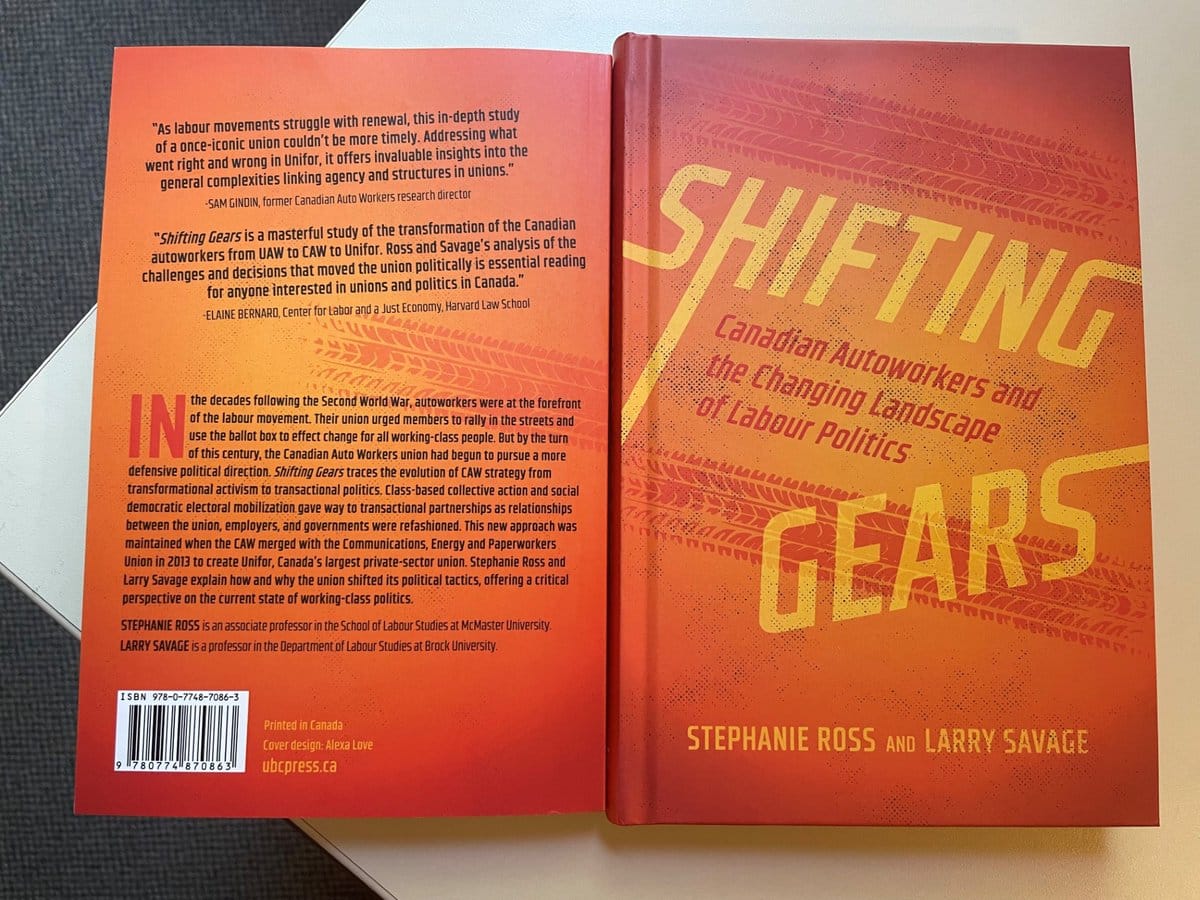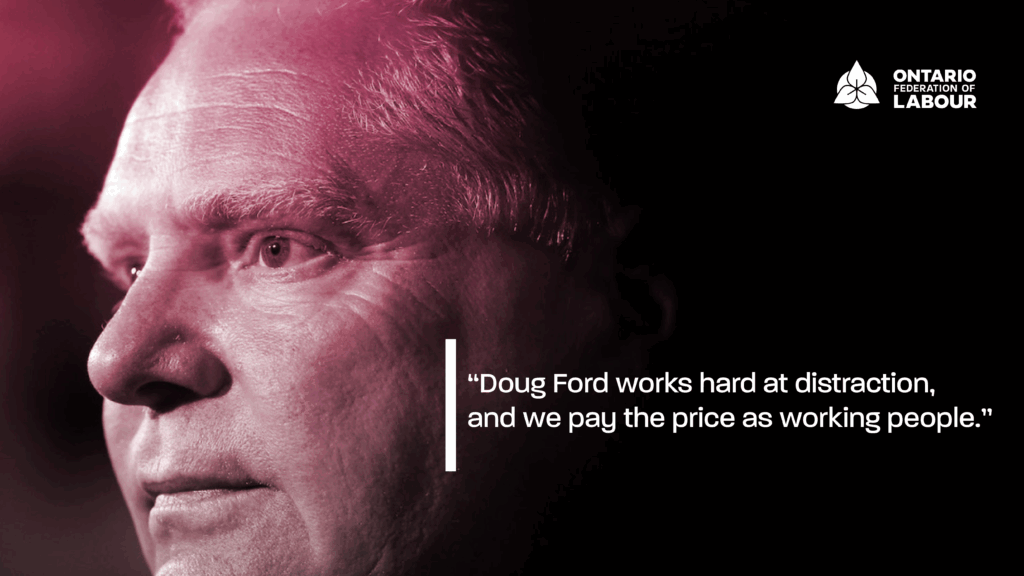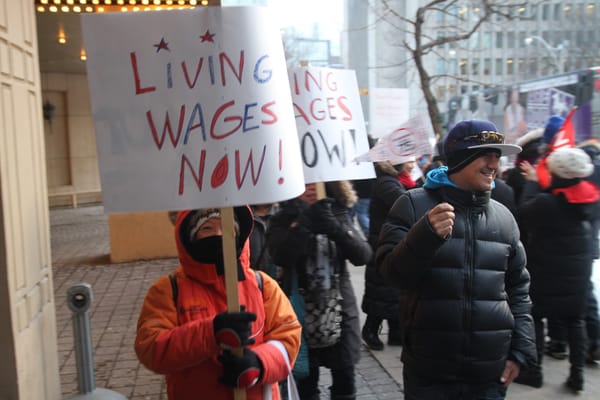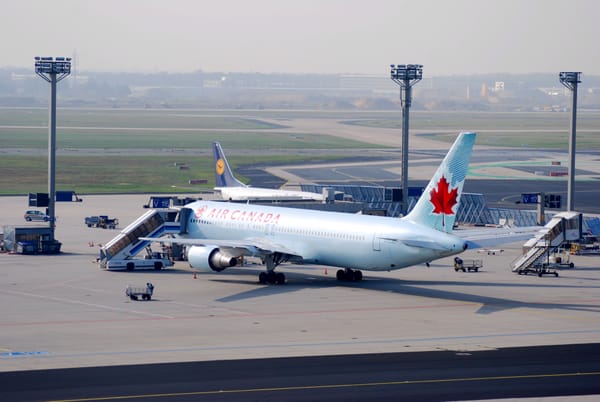
This week, I sat down with Stephanie Ross and Larry Savage, whose new book at UBC Press, Shifting Gears: Canadian Autoworkers and the Changing Landscape of Labour Politics, is out today.
The book traces the political transformation of the Canadian Auto Workers (CAW, now merged into Unifor) from a union with a class-based social democratic outlook to one in which a transactional approach to politics dominates. Shifting Gears also explores the implications of these changes for labour politics more generally.
Stephanie Ross is an associate professor in the School of Labour Studies at McMaster University. Larry Savage is a professor in the Department of Labour Studies at Brock University.
Shifting Gears is being launched at a series of events beginning with an online webinar on September 9. The event, which is free and open to the public, will feature Ross and Savage in conversation with journalist Luke Savage. You can register for the event here.
Adam King: Let’s start with a bit of historical context. The CAW was once part of the United Auto Workers (UAW) international union based in the United States and broke away in 1985 to form an autonomous Canadian union.
For those unfamiliar with this history, can you tell us what motivated this break and what significance your book draws from these developments? In particular, how did Canadian autoworkers and the leadership of the then-Canadian section of the UAW respond differently than their American counterparts to the crisis in manufacturing in the 1980s?
Stephanie Ross: In the late 1970s and early 1980s, the North American auto industry was hit hard by a global recession, leading to widespread layoffs. In the U.S., the UAW accepted concessions to save jobs, which demoralized union members. In contrast, and bolstered by protections from the Auto Pact, Canadian autoworkers had more confidence to resist concessions.
Under Bob White’s leadership, the Canadian section refused to follow the UAW’s lead and became more militant, sparking a push for greater autonomy. By eventually formally breaking away, the CAW embraced a more progressive and militant stance. They rejected the UAW’s concessionary path, setting the stage for a new chapter in Canadian labour history. The new union’s slogan was “Fighting Back Makes a Difference,” and it inspired activists inside and outside the union.
AK: You write in the introduction to the book, “From the 1960s into the 1990s, [the UAW/CAW] saw politics as class-based, which led it to forge a partisan relationship with the [New Democratic Party] and to actively participate in broader social justice struggles. Although the union’s philosophical commitment to social unionism remains intact, its political strategies have shifted significantly.”
In broad terms, can you outline how the union’s political orientation has shifted since this earlier period you describe?
SR: I think the union’s shift in terms of partisan alliances is often misunderstood as a break with social unionism. The reality is more complicated. There’s no question that the union remains committed to social justice projects. But in the face of an unprecedented attack on union rights and freedoms, significant industrial job loss and de-unionization at the turn of the 21st century, a defensive and transactional labour politics became more prominent in the politics of the union.
We see this manifested in strategic partnerships with employers and ad hoc political alliances with Liberal politicians. Meanwhile, political repertoires traditionally associated with social unionism have gradually faded into the background, even while the union continues to frame and understand its politics in social unionist terms.
Larry Savage: I agree. It’s a complicated dynamic and there’s no single explanation. External economic pressures played a significant role in convincing the union to shift gears, but so too did the decisions of key players inside the union. Unions don’t exist in a vacuum. While labour leaders and their members have real capacity to change the political and economic context, they are simultaneously constrained by it. As a result, unions’ strategies and tactics are constantly being reassessed in relation to what is politically possible.
AK: One aspect of the union’s historical orientation to the NDP that I want to draw out concerns a mutual ambivalence that seems to have characterized their approach to each other. As you recount in the book, while many UAW/CAW leaders and staffers were loyal NDPers — and the union provided considerable financial support to the party — NDP membership among workers was never close to universal. Moreover, the federal NDP has yet to form a national government.
What role have these limitations played in shaping the party-union relationship?
LS: Canadian autoworkers never uncritically farmed out their politics to the NDP and always understood their politics to be broader than support for the NDP at election time. Nevertheless, the union definitely saw the NDP as the labour movement’s party and played a key role in bankrolling NDP campaigns well into the 1990s.
A combination of policy and personality clashes eventually led to a formal separation that the union sold to its members as an opportunity to champion a more radical working-class politics. While loosening ties with the NDP theoretically held the promise of creating political space on the left, it’s clear that neither the CAW nor Unifor moved in this direction. Instead, the embrace of an independent labour politics only strengthened the electoral impulse inside the union to reward friends and punish enemies no matter their political stripe.
These transactional impulses sometimes help the NDP in specific campaigns where the party is in contention, but more often they have led to ad hoc electoral alliances with Liberals who are more clearly poised to form government and deliver policy.
AK: Let’s talk specifically about the CAW/Unifor’s move toward “strategic voting” and away from its partisan relationship with the NDP. Why was this significant and how did it change the landscape of labour politics in Canada?
LS: Even though there’s some evidence that the union’s strategic voting campaigns have proven ineffective, there’s no question that the tactic remains a key pillar of its electoral strategy. Initially pitched as a tactical necessity to block the re-election of anti-union Conservatives, strategic voting morphed into a long-term imperative for key union leaders and staff. No longer an ad hoc reaction to a crisis, strategic voting instead became the conventional wisdom for how the union should participate in election campaigns.
It’s also worth emphasizing that the union’s justification for strategic voting has shifted over time in ways that demonstrate a greater desire for proactive political influence with sitting governments. The more explicit transactional dimensions of the union’s politics have become more pronounced, as tactical alliances with Liberals have been forged under the guise of anti-Conservative strategic voting.
AK: A less-explored aspect of the unions’ shift away from the NDP was the emergence of a critical left or syndicalist wing that was active in street protest and other popular mobilizations, such as the anti-globalization movements of the early 2000s and the “Days of Action” protests against the Mike Harris Conservative government in Ontario.
The book does a great job of analyzing this underappreciated aspect of the union’s politics. How do you explain the decline of this left-wing critique of social democracy inside the union?
SR: While the embrace of extra-parliamentary activism was galvanizing for many, the ultimate failure of the Ontario Days of Action protests to stop the Conservative “Common Sense Revolution” and the subsequent re-election of the Harris government was a demoralizing defeat for labour. This defeat created a challenging environment for more radical critiques to gain traction. On top of that, the state-led crackdown on extra-parliamentary politics following 9/11 further stifled militancy and dissent, making it increasingly difficult for unions to engage in the kinds of street protests and popular mobilizations that had been a hallmark of the anti-globalization movement.
The union’s criticisms of the NDP in this period were still framed as a challenge from the left even as the union was drifting to the electoral centre.
The death of the Auto Pact further contributed to a more defensive and inward-looking posture. These events reinforced a focus on survival rather than sparking a push for a more radical political response. The union’s highly centralized structure and the consolidation of power in the president’s office since the split from the UAW also meant that staff and National Executive Board members could be effectively marshalled to contain and redirect any criticism of the union’s political drift under former president Buzz Hargrove.
AK: The book highlights the critical role played by the autoworkers’ union in winning many foundational labour and social rights in Canada, from mandatory union recognition to the key pillars of the Canadian welfare state, such as public healthcare. In what ways would you say the union’s political reorientation has affected its capacity to advance a similarly bold social democratic agenda today?
LS: On one hand, the union now has a broader range of political dance partners to help potentially advance its policy objectives. The union has managed, albeit unevenly, to leverage some of these relationships to deliver investments, more consultations and modest labour law and progressive social policy reforms in some jurisdictions.
On the other hand, the union has arguably lost its focus on a broader political vision for social and economic transformation. For example, take the union’s decision in 2021 to have its then-president, Jerry Dias, and Unifor members stand alongside Doug Ford at a press conference to trumpet a modest minimum wage increase. This was the same premier who had previously scrapped a scheduled minimum wage increase, eliminated paid sick days and capped the wages of public sector workers. Plenty of union activists were angry that Unifor had seemingly granted pro-union cover to an anti-worker premier. A month after the press conference, Ford appointed Dias to head the province’s auto task force.
I don’t want to downplay the need for political pragmatism generally, but if you see politics as a purely transactional exercise, you can sometimes lose sight of the forest for the trees and compromise your values and your vision in ways that are harmful over the long term.
AK: Unifor has also exited the “house of labour” in the sense that it is no longer affiliated to the Canadian Labour Congress (CLC). Yet Unifor’s size and internal capacities mean that it can operate as a labour central of sorts all on its own, while also still influencing local labour councils and provincial federations.
How has Unifor’s relationship to the broader labour movement in Canada changed over the years, and what would you say has been the impact on the latter?
LS: It’s true that Unifor doesn’t rely on affiliation to a central labour organization to carry out its work. For a variety of philosophical, ideological and personal reasons, CAW/Unifor has always had a tense relationship with the rest of the labour movement. The union’s history of high-profile raids has only complicated matters. And there’s no question Unifor’s disaffiliation from the CLC in 2018 hurt the Congress financially and organizationally.
Nevertheless, the union has historically been prominent in leading the labour movement. Three former presidents of the CLC have come from the union’s ranks. In her 2022 bid for Unifor’s presidency, Lana Payne campaigned on exploring options to re-affiliate to the Congress.
The union has certainly been making overt efforts to work cooperatively with segments of the labour movement where interests align. Payne, for example, was one of the first labour leaders to declare support for Ontario education workers who struck in defiance of provincial government legislation in fall 2022.
AK: In part responding to economic changes, Unifor increasingly represents workers across a range of sectors. Similar to other large contemporary labour organizations, it’s now a “general union” of sorts. What role have these shifts played in changing Unifor’s economic and political orientation?
SR: One of the central ideas of the merger that created Unifor was that a bigger, more diverse union would wield greater political clout. But the reality is more complicated given the need to balance different sectoral interests.
As Unifor leaders learned in the last Ontario provincial election, different segments of the membership have very different political priorities that make it challenging for leaders to effectively navigate the electoral terrain. In that case, leaders were forced to juggle opposition to the government’s wage restraint legislation for members working in health care with support for promised investments in EV automotive manufacturing that would benefit the union’s traditional autoworker base.
This dynamic contributed to mixed messaging that arguably undermined Unifor’s effectiveness during the campaign, which saw Doug Ford re-elected with an even larger majority, picking up seats in blue-collar ridings in Windsor, Brampton, Hamilton and Timmins.
AK: Last year, Unifor and the UAW in the U.S. were both bargaining with the Detroit Three automakers. The UAW, under new reform leadership, engaged in a series of highly publicized “Stand-Up Strikes” and won historic contracts. Unifor, by contrast, bargained in a more traditional fashion, with minor labour disruption. At the end of the day, both unions secured major gains at the bargaining table, though they deployed noticeably different campaigns, rhetoric and member mobilization strategies.
How do you understand the differences between Unifor and the UAW during this last round of auto bargaining?
LS: I think the UAW’s strategic repositioning in advance of the 2023 auto talks proved disorienting for Unifor’s leadership because it made Canadian autoworkers look less militant in comparison. Keep in mind that Canadian autoworker identity has largely been defined in opposition to the UAW’s traditional business unionism. The 2023 round of bargaining flipped that narrative on its head. It was a real wake-up call when members nearly rejected the historic pattern agreement that Unifor negotiated with Ford.
SR: I think Unifor’s pragmatism and fear of job loss has made it more cautious. It’s also interesting to note that, in the U.S., the UAW built on the momentum and excitement of its stand-up strike strategy to achieve a historic breakthrough by unionizing a Volkswagen plant in Tennessee in April 2024. We haven’t seen that kind of organizing breakthrough replicated in Canada.
AK: While sympathetic to many past and present leaders and rank-and-file members, the book is nevertheless critical of the union’s embrace of a more transactional political orientation. Given Unifor’s significant place in the contemporary Canadian labour movement, it seems a renewal of Canadian labour necessarily involves a political radicalization of this particular union.
SR: As Canada’s largest private sector union, Unifor plays a critical role in any reorientation of labour politics. What that reorientation will look like, however, is still an open question.
Working-class politics isn’t inherently left-wing, let alone radical. Pierre Poilievre’s popularity clearly demonstrates that right-wing working-class populism has a large audience in Canada. Unions need to be consciously constructing a left-wing brand of working-class politics to counteract this tendency, and to provide a clear vision and concrete solutions to the multitude of crises facing working people. Otherwise, the mantle of working-class politics will be carried by anti-union forces that will cast labour leaders and union activists as part of the problem rather than part of the solution.
Recent Class Struggle Issues
- August 26 | Should Canadian Governments Really Be Subsidizing Goodyear?
- August 19 | The United Auto Workers Are Taking On Donald Trump And Elon Musk
- August 12 | The Way We Measure Unemployment In Canada Is Broken
- August 5 | How To Fix The Staffing Crisis In Manitoba’s Health-Care System







